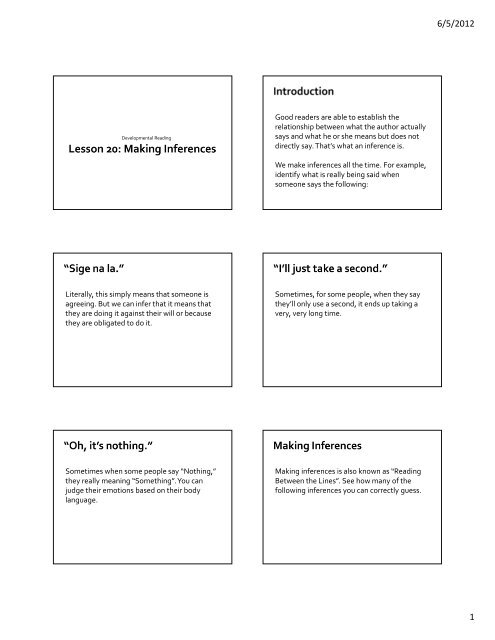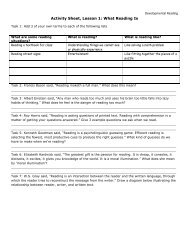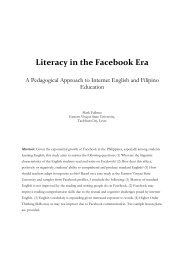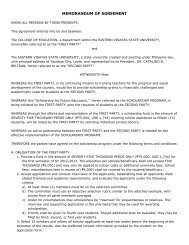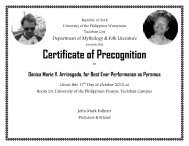PDF handout of the 32 Powerpoints - Mark Fullmer
PDF handout of the 32 Powerpoints - Mark Fullmer
PDF handout of the 32 Powerpoints - Mark Fullmer
You also want an ePaper? Increase the reach of your titles
YUMPU automatically turns print PDFs into web optimized ePapers that Google loves.
6/5/2012Developmental ReadingGood readers are able to establish <strong>the</strong>relationship between what <strong>the</strong> author actuallysays and what he or she means but does notdirectly say. That’s what an inference is.We make inferences all <strong>the</strong> time. For example,identify what is really being said whensomeone says <strong>the</strong> following:Literally, this simply means that someone isagreeing. But we can infer that it means that<strong>the</strong>y are doing it against <strong>the</strong>ir will or because<strong>the</strong>y are obligated to do it.Sometimes, for some people, when <strong>the</strong>y say<strong>the</strong>y’ll only use a second, it ends up taking avery, very long time.Sometimes when some people say “Nothing,”<strong>the</strong>y really meaning “Something”. You canjudge <strong>the</strong>ir emotions based on <strong>the</strong>ir bodylanguage.Making inferences is also known as “ReadingBetween <strong>the</strong> Lines”. See how many <strong>of</strong> <strong>the</strong>following inferences you can correctly guess.1


